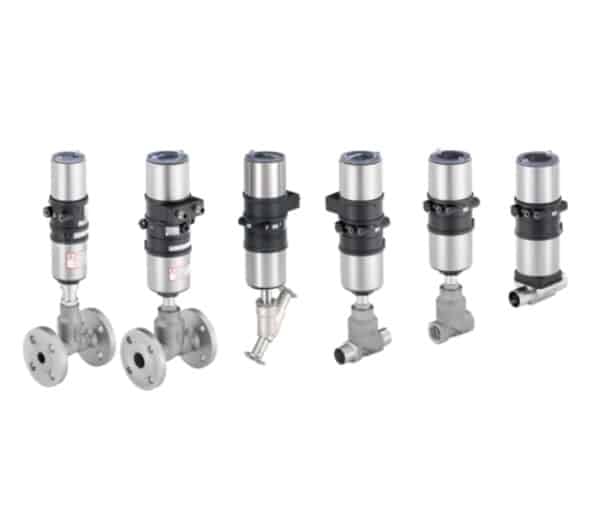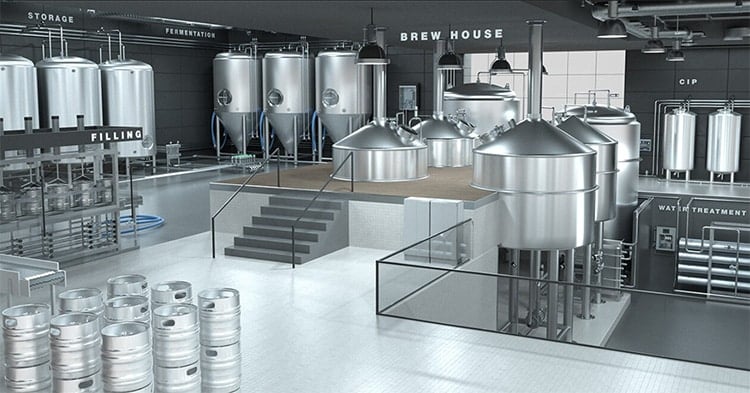Simple Steps To Successfully Size Control Valves
Kieran Bennett, Industry Manager – Food & Bev at Bürkert, explains how to specify a control valve.
Specifying a replacement control valve can be a challenge. Making the right choice ensures optimum system control and accuracy, but sizing requires time, as well as a certain level of expertise. To help resolve these challenges, flow control specialist, Bürkert, has released a new tool that makes sizing and specifying a control valve for nearly all applications a fast and simple process.
When a replacement control valve is required, it’s often the case that the user isn’t aware of the full specification detail or the application’s parameters. This can make what should be a simple, like-for-like swap, a complex and onerous task for the plant engineer.
Even if involving a third-party supplier, it can extend procurement time and still require the provision of a detailed specification. Otherwise, it can mean assumptions made by the supplier in specification that might not ensure optimum control valve accuracy.
In many cases, the extent of the end-user’s knowledge is that they require a particular size of modulating control valve. However, to ensure that it’s correctly specified, the valve supplier might ask for details that the engineer probably doesn’t have easy access to, such as flow rate or the viscosity of the media. In reality though, for the vast majority of applications it’s fast and simple to specify the right control valve, based on three simple criteria, readily available to the end user.
Three steps to specification
The first question is: what does the valve primarily control? The answer is a choice between flow, temperature, or pressure. Secondly, what media is the valve controlling and what is the application type?
This provides general clarification on whether a liquid, steam or gas is involved, and confirms aspects such as whether the media is aggressive. Understanding the application type also confirms aspects such as the specific hygienic requirements of the design, as well as the control type required, for example, modulating or isolation. Thirdly, inlet line size should be confirmed.
To quickly specify a complete package with part numbers, including the right control valve with process controller, sensor, and cables, Bürkert has developed a Valve Sizing Calculator, based on the three selection steps. In action, the Valve Sizing Calculator, provides a specification that ensures control accuracy as well as flexibility.
Selecting for flow control, for example, specifies a valve with an extremely wide range, making it suitable for almost any purpose. In the case of a water application and a 1 inch / 25 mm line, the specified device can operate effectively from a minimum flow of 900 litres per hour (l/h) up to as much as 16,070 l/h.
Alternatively, to ensure compatibility of specified valves for temperature control and pressure control applications, the sizing tool provides minimum and maximum ratings for these attributes, as well as the Kv value.

Control accuracy
Sizing components on an individually tailored basis achieves the highest performance. However, for the vast majority of applications, using the Valve Sizing Calculator, will not only prove much faster and easier to specify a replacement control valve, but the performance difference would be negligible compared to tailored calculation.
Taking the case of flow control, 20 years ago, control valve technology demanded that the accurate valve range was between 60 and 80% open. While these values still serve as a guide, valve accuracy has improved to the extent that individual sizing is no longer required in most cases. Bürkert’s pneumatic valves are accurate to within 0.5% across nearly the entire range of motion, and if required, electromotive valves are accurate to within 0.1%.
Providing that the pressure drop across the valve is an absolute maximum of 50% of the incoming pressure, and that the temperature and pressure do not exceed or fall below the given values, the control valves specified by the Simple Sizing Tool will fit the requirements.
Ultimately, this approach covers nearly all applications, except for those with extreme limits and fluctuations, such as steam control in a power station, where a tailored specification would be needed.
Complete control valve specification
For ease of procurement across the system, the Valve Sizing Calculator also specifies control technology type, ranging from angle seat valves for standard liquid flow control, to globe control for pressure modulation.
Valve seal design materials are also specified, such as EPDM for aggressive liquids. For hygienic applications, PTFE seals are provided, as well as crevice-free valve clamp ends instead of threaded variants.
Control valve specification doesn’t have to be challenging. Using the basic steps provided by the Valve Sizing Calculator, it’s fast and simple to confidently specify a control valve that ensures not only the right fit and performance but includes all the components required for a fast and straightforward replacement.
Try the Valve Sizing Calculator here

Burkert Fluid Control Systems
- 01285648720
- sales.uk@burkert.com
- http://www.burkert.com/
- Fluid Control Centre 1 Bridge End Gloucestershire Cirencester GL7 1QY GB
About us
Bürkert is present in thirtyfive countries around the world. We also work with a large network of distributors and partners, which means we are as close as possible to our customers. This global presence ensures full service and support to all of our customers in every country around the world. Research is the lifeblood of our company.
At Bürkert, we are never satisfied with the status quo and are continually seeking new technologies and solutions for our customers. Every year, our people develop new and highly advanced products and solutions, ranging from integrated process measurement and control units to the most sophisticated systems used in pharmaceutical research. To be a market leader, we are also an R&D leader.
Therefore, our investment in research & development is one of the highest in our industry. In our research centres in Germany and France, 150 people are committed to working for a common future for our company and our customers. We are committed to offering our expertise wherever it is needed, anywhere in the world. This global presence ensures that our advances in fluid control technology are also global.
What we do in a nutshell
Manufacture of process equipment. One of the few manufacturers to provide solutions for the complete control loop.
Where we supply to
UK Ireland, Europe
Industries we supply to
Food and Beverage, Pharmaceutical Cosmetics Toiletries, Water and Wastewater
-
Surface Acoustic Wave (SAW) Technology: Advanced Flow Measurement and Biofilm Prevention in WFI Loops
Bürkert, a leader in flow control solutions, has introduced an innovative flowmeter that employs Surface Acoustic Wave (SAW) technology. This...
-
Bürkert Launches Ultra High-pressure Valves For Hydrogen Applications
Liquid and gas flow control specialist Bürkert has launched a range of valves designed to control ultra high-pressure flow for...
-
A Question Of Reliability: Supply And Control Devices For Industrial Printers
In the world of industrial and commercial printing, the efficiency and precision of ink supply and control systems are crucial...
-
UK’s first hydrogen kiln test rig helps manufacturers make a sustainable switch
A hydrogen-fuelled kiln test rig is helping brick and ceramics manufacturers to support the energy transition. In a UK first,...
-
Bürkert’s OALAB simplifies chlorine measurement for industrial carbon filters
Common in pharmaceutical, food and beverage applications, industrial high-rate granular activated carbon (GAC) filters remove chlorine from water supplies, safeguarding...
-
Tradition benefitting from technology: Controlling the brewing process
The food and beverage industry is continually evolving, driven by the need for enhanced efficiency, quality, and safety. Central to...
-
FLOWave | Oil dosing (English)
-
Feldbus Gateway Modul ME43: How to operate FLOWave (DE)



















